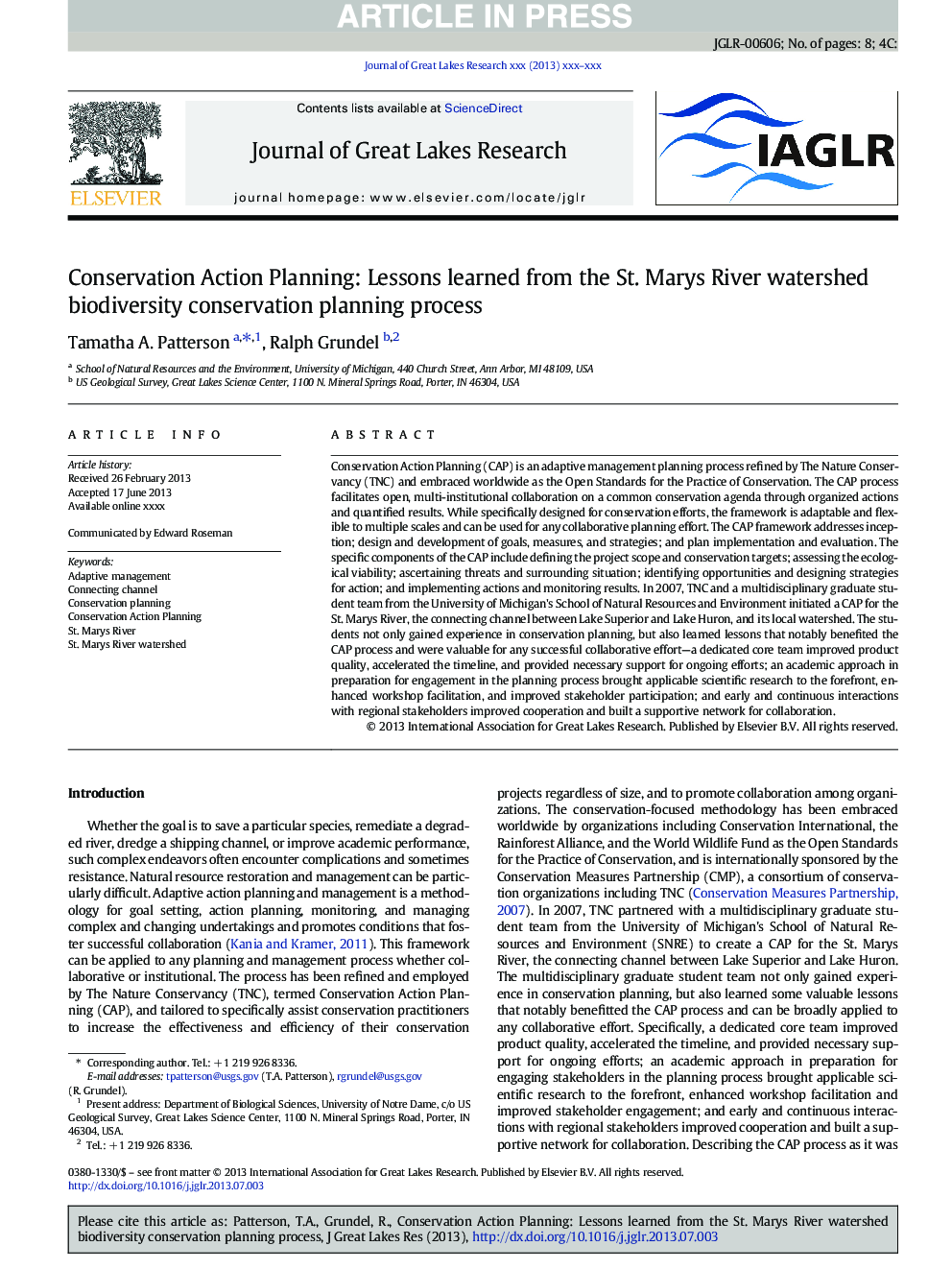| کد مقاله | کد نشریه | سال انتشار | مقاله انگلیسی | نسخه تمام متن |
|---|---|---|---|---|
| 4398420 | 1306690 | 2014 | 8 صفحه PDF | دانلود رایگان |
عنوان انگلیسی مقاله ISI
Conservation Action Planning: Lessons learned from the St. Marys River watershed biodiversity conservation planning process
دانلود مقاله + سفارش ترجمه
دانلود مقاله ISI انگلیسی
رایگان برای ایرانیان
کلمات کلیدی
موضوعات مرتبط
مهندسی و علوم پایه
علوم زمین و سیارات
علوم زمین و سیاره ای (عمومی)
پیش نمایش صفحه اول مقاله

چکیده انگلیسی
Conservation Action Planning (CAP) is an adaptive management planning process refined by The Nature Conservancy (TNC) and embraced worldwide as the Open Standards for the Practice of Conservation. The CAP process facilitates open, multi-institutional collaboration on a common conservation agenda through organized actions and quantified results. While specifically designed for conservation efforts, the framework is adaptable and flexible to multiple scales and can be used for any collaborative planning effort. The CAP framework addresses inception; design and development of goals, measures, and strategies; and plan implementation and evaluation. The specific components of the CAP include defining the project scope and conservation targets; assessing the ecological viability; ascertaining threats and surrounding situation; identifying opportunities and designing strategies for action; and implementing actions and monitoring results. In 2007, TNC and a multidisciplinary graduate student team from the University of Michigan's School of Natural Resources and Environment initiated a CAP for the St. Marys River, the connecting channel between Lake Superior and Lake Huron, and its local watershed. The students not only gained experience in conservation planning, but also learned lessons that notably benefited the CAP process and were valuable for any successful collaborative effort-a dedicated core team improved product quality, accelerated the timeline, and provided necessary support for ongoing efforts; an academic approach in preparation for engagement in the planning process brought applicable scientific research to the forefront, enhanced workshop facilitation, and improved stakeholder participation; and early and continuous interactions with regional stakeholders improved cooperation and built a supportive network for collaboration.
ناشر
Database: Elsevier - ScienceDirect (ساینس دایرکت)
Journal: Journal of Great Lakes Research - Volume 40, Supplement 2, 2014, Pages 7-14
Journal: Journal of Great Lakes Research - Volume 40, Supplement 2, 2014, Pages 7-14
نویسندگان
Tamatha A. Patterson, Ralph Grundel,